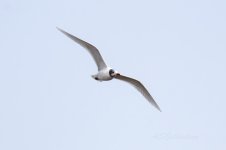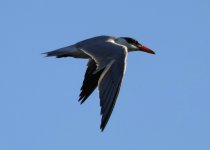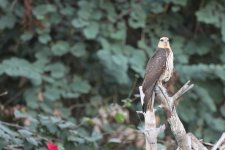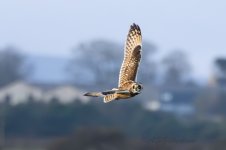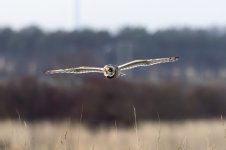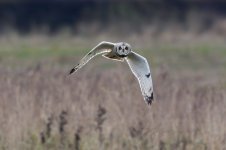I've got a Canon R7 and need to upgrade my old lenses (Canon EF 100-400mk1 and tamron 18-240). I'm off to the Brazilian Pantanal later this year and am not sure whether to get an EF 100-400 mk11, which has a minimum aperture of f5.6 or the rf 100-500 which reduces to f7.1. I also need a standard lens and am undecided between the canon rf 24-70 f4 or the 24-105. Has anyone had any experience with these, I'm particularly interested in sharpies and whether the 100-500 will give sufficient exposure. I have to say the shots I was really impressed with the AF and tracking of my old 100-400 mk1 when taking birds in flight in Mexico but the Tamron just did not perform. I mainly am taking bird or wildlife shots but some closer pictures of fungi and butterflies.
-
Welcome to BirdForum, the internet's largest birding community with thousands of members from all over the world. The forums are dedicated to wild birds, birding, binoculars and equipment and all that goes with it.
Please register for an account to take part in the discussions in the forum, post your pictures in the gallery and more.
You are using an out of date browser. It may not display this or other websites correctly.
You should upgrade or use an alternative browser.
You should upgrade or use an alternative browser.
I've got a Canon R7 and need to update my lenses (2 Viewers)
- Thread starter chris w
- Start date
More options
Who Replied?SimonG4ELI
Well-known member

Hi Chris,
The rf100-500L is superb, absolutely superb. You may also want to consider the new rf200-800mm f9 if reach may be an issue. In my stomping ground near the Helford river the reach of the 800mm is much needed. But - the rf200-800mm is heavier.
So, to answer your question, get the rf100-500mm. Check the Facebook groups as well.
The rf100-500L is superb, absolutely superb. You may also want to consider the new rf200-800mm f9 if reach may be an issue. In my stomping ground near the Helford river the reach of the 800mm is much needed. But - the rf200-800mm is heavier.
So, to answer your question, get the rf100-500mm. Check the Facebook groups as well.
Barred Wobbler
Well-known member
I've got an R7 and an R5. I also am in the fortunate position of being in possession of a new RF 200-800 for these past four weeks, and I love it (photos below taken yesterday).
I also have the RF 100-500, since 2021 and the RF 24-105, which replaced my EF version a few months ago.
However, in your position I would hesitate in getting the 200-800 lens as an all-rounder zoom. It's heavier, but not much, only a pound and a half, but for packing away for travelling, it's going to take quite a bit of space, since it's a bit longer and a good bit fatter than the 100-500. I've also found that the 200-800 on the R7 isn't great with birds in flight, especially at full zoom. They are so large in the viewfinder, they seem to whizz by before you can fire the shutter, and unless they are at a distance where you lose detail because of intervening atmospheric conditions, they are hard to track. You get some great shots, but you miss a frustrating number. My solution to this is to zoom back to about 500mm. The 800 works well on the same birds with my full frame R5, but with the crop body it's just too much zoom for the flying stuff. I also feel that the R7 isn't as good as the R5 with the 200-800 in dull light.
Given the choice in your situation, I'd go for the 100-500 as a walk-round zoom. It's got great reach on the crop body, and it focuses down to a lot closer range than the 200-800 zoomed out for your butterflies etc.
As for the general purpose lens, the RF 24-105 F4 is great. Very light, lighter than its EF equivalent, especially with the adapter added. I have an EF 24-70 F2.8 that I use for night shots and portraits indoor, but in my experience, that extra reach of the 24-105, makes it a better all-rounder.
The (well cropped) flight shot was at 800mm and it's soft because the bird was too far away to allow detail, OK to track at that range, but not so great at detail..
EDIT. I'm off to Tarifa at the end of April for the spring honey buzzard migration. I still haven't made up my mind which of the long lenses to take, but I'm leaning towards the 100-500 at the moment, however because of poor light for the past month, I'm still very much in the trial stage with the 200-800.
I also have the RF 100-500, since 2021 and the RF 24-105, which replaced my EF version a few months ago.
However, in your position I would hesitate in getting the 200-800 lens as an all-rounder zoom. It's heavier, but not much, only a pound and a half, but for packing away for travelling, it's going to take quite a bit of space, since it's a bit longer and a good bit fatter than the 100-500. I've also found that the 200-800 on the R7 isn't great with birds in flight, especially at full zoom. They are so large in the viewfinder, they seem to whizz by before you can fire the shutter, and unless they are at a distance where you lose detail because of intervening atmospheric conditions, they are hard to track. You get some great shots, but you miss a frustrating number. My solution to this is to zoom back to about 500mm. The 800 works well on the same birds with my full frame R5, but with the crop body it's just too much zoom for the flying stuff. I also feel that the R7 isn't as good as the R5 with the 200-800 in dull light.
Given the choice in your situation, I'd go for the 100-500 as a walk-round zoom. It's got great reach on the crop body, and it focuses down to a lot closer range than the 200-800 zoomed out for your butterflies etc.
As for the general purpose lens, the RF 24-105 F4 is great. Very light, lighter than its EF equivalent, especially with the adapter added. I have an EF 24-70 F2.8 that I use for night shots and portraits indoor, but in my experience, that extra reach of the 24-105, makes it a better all-rounder.
The (well cropped) flight shot was at 800mm and it's soft because the bird was too far away to allow detail, OK to track at that range, but not so great at detail..
EDIT. I'm off to Tarifa at the end of April for the spring honey buzzard migration. I still haven't made up my mind which of the long lenses to take, but I'm leaning towards the 100-500 at the moment, however because of poor light for the past month, I'm still very much in the trial stage with the 200-800.
Attachments
Last edited:
Thanks so much for your feedback so far. Whilst I'm sure the extra reach on the 200-800 is really helpful, I'd be concerned about the extra weight and size when travelling as I would not be using a tripod. I'm very fond of my old 100-400 mk1 but it's definitely time to upgrade and I suspect it will be to the 100-500. My main concern is the loss of light when using autofocus, particularly in heavily wooded areas. It sounds as if the 24-105 might be more versatile than the 24-70 although ultimately it's the quality that counts, particularly when I have to crop.
Barred Wobbler
Well-known member
I wouldn't worry too much about the weight of the 200-800. In use, it's well-balanced and doesn't feel heavy, but it's bulky. I never use a tripod if I can avoid it, only for bulb exposures or some video work. I like the mobility and minimal disturbace of hand-holding.
If I was restricted to one long zoom, I'd go with the 100-500 as the better all-rounder.
If I was restricted to one long zoom, I'd go with the 100-500 as the better all-rounder.
Fowl Mouth
Just a guy with dogs
More of a theoretical answer here since I have no experience with these two lenses. FWIW I was looking at both recently, but decided on on older big prime instead, although optically there isn't much between any of them regarding sharpness in the real world. As far as I can tell the 100-500 at 500 cropped is close to the same sharpness as the 200-800 at 800 uncropped. I think the biggest argument here is actually the closer working distance of the 100-500, as it also makes an amazing not-quite-macro lens for flies and flowers.
Fair points. As I've said, I've currently been using my old 100-400 mk1, which performs pretty well and my main concern is that currently my lens min ap is 5.6 whereas the 100-500 is 7.1 and I'm slightly concerned with the loss of light. This is particularly the case when using autofocus to track and focus fast moving birds, particularly in the evening. The shots below were taken in Mexico with my old lens (and are sharp when not uploaded!) and the second was in the evening in a mangrove swamp as the light was falling when some people were struggling with the light.More of a theoretical answer here since I have no experience with these two lenses. FWIW I was looking at both recently, but decided on on older big prime instead, although optically there isn't much between any of them regarding sharpness in the real world. As far as I can tell the 100-500 at 500 cropped is close to the same sharpness as the 200-800 at 800 uncropped. I think the biggest argument here is actually the closer working distance of the 100-500, as it also makes an amazing not-quite-macro lens for flies and flowers.
Attachments
Fowl Mouth
Just a guy with dogs
Completely valid. And I understand your concern for aperture in lower light. That's one of the two reasons I abandoned these zoom lenses from my recent search. So as not to insult those who prefer them (100-400 II, 100-500, 200-800) I want to go on record saying I love all three, and the versatility of them made it difficult to decide which direction I wanted to go in. Not to mention the micro contrast on the newer RF glass definitely out paces the older primes when you start cropping. I was cross shopping against the 300 2.8 IS L (ver 1) and the 400 4 IS DO (ver 1). I ended up instead going for the 400 DO because I knew the F4 aperture would take my AF reliability deeper into dusk and dawn, but I also crave that b/g rendering that only larger apertures can give.Fair points. As I've said, I've currently been using my old 100-400 mk1, which performs pretty well and my main concern is that currently my lens min ap is 5.6 whereas the 100-500 is 7.1 and I'm slightly concerned with the loss of light. This is particularly the case when using autofocus to track and focus fast moving birds, particularly in the evening. The shots below were taken in Mexico with my old lens (and are sharp when not uploaded!) and the second was in the evening in a mangrove swamp as the light was falling when some people were struggling with the light.
Back to the point though, I obviously can't say because I haven't used any of them, but maybe users of the 100-500/200-800 RF who have had experience with the older 100-400 EF can chime in. It's my understanding that the 100-500 in particular actually doesn't struggle with focus acquisition or tracking any more than the 100-400 (ver 1 or II). Something in the newer lenses, maybe dual nano AF motors or better coatings, combined with the AI AF system of the RF bodies, gives equally reliable AF performance. Maybe I'm wrong, that's why I bring it up, because it seems to be the crux of your concerns. Hopefully users can add some empirical knowledge here, since I'm really just taking random things that I've read across the forums.
Barred Wobbler
Well-known member
4 in pretty poor light. A late November afternoon in Northumberland. All quite heavy crops with the R7 & 100-500. Mostly cloud, with the sun breaking through occasionally.
The first one is 1/2500, F7.1, ISO 4000 (1pm)
The others are all 1/2000. F7.1 ISO 6400, (taken as the light faded between 2.35 & 2.45- just over an hour before sunset, which was 3.54).
The first one is 1/2500, F7.1, ISO 4000 (1pm)
The others are all 1/2000. F7.1 ISO 6400, (taken as the light faded between 2.35 & 2.45- just over an hour before sunset, which was 3.54).
Attachments
SurreyAlan
Member

As someone who's also pondering the choice I put my R7 with the 100-400 on the scales which came in at 1280gms. I nearly always have the 1.4 teleconverter on which takes it up to 1505. The 100-500 would make it 2160 but while the quality would be better the reach would be less so if I add the teleconverter the weight becomes 2385 which compares with the 200-800 at 2680.
I think the 100-500 is approx 120g heavier than the 100-400usm a but is lighter than the more recent mk11. Either way, it seems a fair trade off for the additional range it provides.As someone who's also pondering the choice I put my R7 with the 100-400 on the scales which came in at 1280gms. I nearly always have the 1.4 teleconverter on which takes it up to 1505. The 100-500 would make it 2160 but while the quality would be better the reach would be less so if I add the teleconverter the weight becomes 2385 which compares with the 200-800 at 2680.
Evan Atkinson
Always finding a way to go off topic...

If money is an issue, get the 100-400 II. You can find them on MPB for around £1k in "good" condition, and usually there are some in "excellent" condition for about £1.1k-£1.2k As for the 100-500, you are losing 2/3'rds of a stop which can make a difference when it comes to shooting in the dark jungle. On MPB there is currently only 1 there for £2200 which is in "excellent" condition.
Links to both lenses:
Canon EF 100-400 II - https://www.mpb.com/en-uk/product/canon-ef-100-400mm-f-4-5-5-6-l-is-ii-usm/sku-2168627
Canon RF 100-500 - https://www.mpb.com/en-uk/search?q=canon rf 100-500
I think that the Canon R7 + EF 100-400 II together is an incredibly good combination, the EF lens is very, very sharp and it is also quite light. I'm aware that the RF 100-500 is the native mount for the R7 but I honestly can't see much of a difference in IQ between the 2 lenses, the RF might be a smidgen sharper in some circumstances but it's only really noticeable if you are heavily pixel peeping. Both lenses AF very quickly too. Below are a couple of pics that I have been very happy with with the R7 + 100-400 II setup.
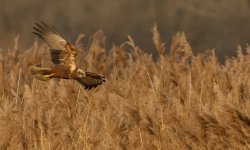
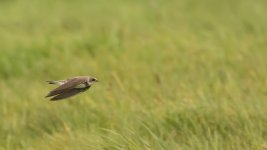
Kind regards
Evan
Links to both lenses:
Canon EF 100-400 II - https://www.mpb.com/en-uk/product/canon-ef-100-400mm-f-4-5-5-6-l-is-ii-usm/sku-2168627
Canon RF 100-500 - https://www.mpb.com/en-uk/search?q=canon rf 100-500
I think that the Canon R7 + EF 100-400 II together is an incredibly good combination, the EF lens is very, very sharp and it is also quite light. I'm aware that the RF 100-500 is the native mount for the R7 but I honestly can't see much of a difference in IQ between the 2 lenses, the RF might be a smidgen sharper in some circumstances but it's only really noticeable if you are heavily pixel peeping. Both lenses AF very quickly too. Below are a couple of pics that I have been very happy with with the R7 + 100-400 II setup.


Kind regards
Evan
First of all thanks to everyone for your feedback on this. I finally made the decision to get the RF 100-500L, as it meant I did't need to use an adaptor with my camera, although I've no doubt the 100-400EF Mk11 would have also produced superb results. My main original concern was the smaller aperture at maximum zoom but this afternoon I've been out in heavily overcast weather in late afternoon and was able to take the shot below of a Little Bunting, (albeit heavily cropped)from approx 50yds. I still have to make a decision re the smaller lens for the R7 and will spend the summer checking this out.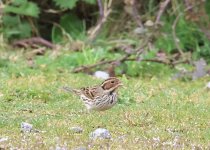

Faced the same dilemma a few years back and ended up adopting my R7 with the RF 100-500 as my primary walk-around setup. Overall I’ve been quite impressed. While the R7 doesn’t quite have the consistent autofocus performance of the R5 or R3, this setup still captures some splendid images even in some pretty crappy lighting conditions. Here are a few taken on particularly gloomy days.
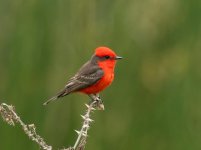
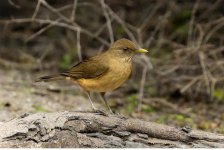
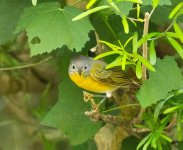
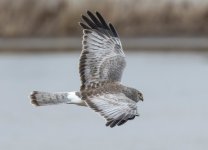




I did the same thing a month ago and have been impressed with the R7 + 100-500mm so far. I'm also considering a msmaller lens though for photographing birds in woodland but am not sure whether to get the rf 24-105 or the refs 18-150. Has anyone any experience with these lenses?Faced the same dilemma a few years back and ended up adopting my R7 with the RF 100-500 as my primary walk-around setup. Overall I’ve been quite impressed. While the R7 doesn’t quite have the consistent autofocus performance of the R5 or R3, this setup still captures some splendid images even in some pretty crappy lighting conditions. Here are a few taken on particularly gloomy days.
View attachment 1570072View attachment 1570073View attachment 1570074View attachment 1570075
Barred Wobbler
Well-known member
I've got the 24-105 and I use it as a general lens on my R5 and it's good for that, but I'd say it's pretty much useless for birds, even on my R7. Much too short.I did the same thing a month ago and have been impressed with the R7 + 100-500mm so far. I'm also considering a msmaller lens though for photographing birds in woodland but am not sure whether to get the rf 24-105 or the refs 18-150. Has anyone any experience with these lenses?
Similar threads
- Replies
- 34
- Views
- 2K
Users who are viewing this thread
Total: 3 (members: 0, guests: 3)





